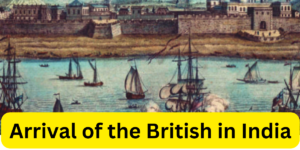Khilji Dynasty
Introduction:
Khilji Dynasty, ruling from 1290 to 1320, emerged after Jalaluddin Khilji overthrew the last ruler of the Slave Dynasty.Under Ala-ud-din Khilji, the empire expanded through successful military campaigns and established a centralized administration.They maintained a strong military and implemented policies to enhance internal security.The dynasty witnessed significant cultural and architectural developments, blending Persian, Turkish, and Indian influences.The assassination of Sultan Qutb-ud-din Mubarak Shah in 1320 marked the end of the Khilji Dynasty, leading to the rise of the Tughlaq Dynasty.
Khilji Dynasty Ruler(1290 -1320):
| Ruler | Reign | father | |
| Jalaluddin Khilji | 1290 – 1296 | – | |
| Alauddin Khilji | 1296 – 1316 | Jalaluddin Khilji | |
| Malik Kapoor | 1316 | Alauddin Khilji | |
| Qutb-ud-din Mubarak Shah | 1316 -1320 | Malik Kapoor |
Jalaluddin Khilji🙁 1290 – 1296)
- After Balban’s death, his son Kaiqubad was not fit to be the king.
- As a result, his three-year-old son, Guymars, was placed on the royal bed.
- There was a difference of opinion between the imperial ministers and acting governors.
- As a result, Malik Jalauddin Khalji, who was the commander of the army, rose to the top.
- Jalaluddin, who ruled in the name of Kaiqubad, killed him through his officials.
- Opposition to Jalaluddin was high on the grounds that he was a non-Turk.
- He was an Afghan.
- Although many nobles protested against him. Then he subdued them.
- In 1292, he opposed the Mongol hordes and prevented them from entering India.
- Alauddin Khalji, the governor of Kara, was the nephew of Jalauddin Khalji.
- After defeating the Yadava king Ramachandra of Devagiri, Alauddin Khalji plundered the city and returned with great wealth.
- He bribed the nobles and generals and treacherously killed Jalad-ud-Din.
Alauddin Khilji:(1296 – 1316)
- In contrast to the tolerance of Jalaluddin, he followed the harsh rule of Balban.
- The wealth of the nobility, intermarriage, incompetence, and alcohol were the causes of the unrest.
- Strict laws were enacted:
- Alcohol and drugs are prohibited.
- Improved intelligence system to keep an eye on the nobles.
- The noble property was confiscated.
- Gatherings without permission are prohibited.
- He patronized poets like Amir Hasan and Amir Khusrau.
- Alai Darwaza and the new capital city of Siri were built.
- Four separate markets, price controls, Dewan-i-Riyazat department, secret agents , fixed prices in times of famine.
- He died in 1316.
Military campaigns:
- Mongols: Defeated the invaders six times.
- The conquest of Gujarat became possible as Alauddin sent an army under two of his generals, Nusrat Khan and Ulugh Khan, to conquer Gujarat in 1299.
- Ranthambre: It is considered to be the strongest fortress in Rajasthan. Initially, the Khalji army suffered losses and Nusrat Khan lost his life as well. In 1301 CE, the fort fell to Alauddin.
- Chittor: Conquered in 1303, Raja Ratan Singh and women performed Jauhar (controversial intent).
- Malwa: Conquered in 1305, annexed Ujjain, Mandu, Chanderi , and Dhar.
- Shivana: In 1308, conquered Raja Sital Deva was defeated.
- Jalore: Annexed in 1311, became the master of North India.
- Devagiri: Rai Ramchandra, captured in 1306-07, surrendered with honour.
- Warangal: Defeated Prataparudra Deva in 1309 and gained great wealth.
- Hoysalas: Defeated Vira Walla III and captured large booty.
- He reached Rameswaram, built a mosque and returned with great wealth.
Qutb-ud-din Mubarak Shah:
- Qutbuddin Mubarak Shah, son of Alauddin Khilji, became the third ruler of Delhi after escaping from Malik Kafur’s prison.
Malik Kafur’s death brought relief to the people due to his reign of terror. - Mubarak Shah was imprisoned by Malik Kafur for breaking his rules but was later released.
He appointed his own brother and then killed him to secure his position
Mubarak Shah became the Third Ruler of the Delhi sultanate after killing Shihabuddin Omar. - He abolished heavy taxes and released thousands of prisoners imposed by his father.
His mother, Jhatyapali, was the daughter of Ramachandra of Devagiri. - Kafur started killing Mubarak Shah’s family members to eliminate potential threats to his control over the throne.
Mubarak Shah was imprisoned by Kafur but was later freed by his father’s former bodyguard. - After his release, he killed Kafur.Mubarak Shah reinstated private lands that were taken by Alauddin and abolished harsh taxes and fines.
More information Of Delhi Sultans




Pingback: Delhi Sultanate